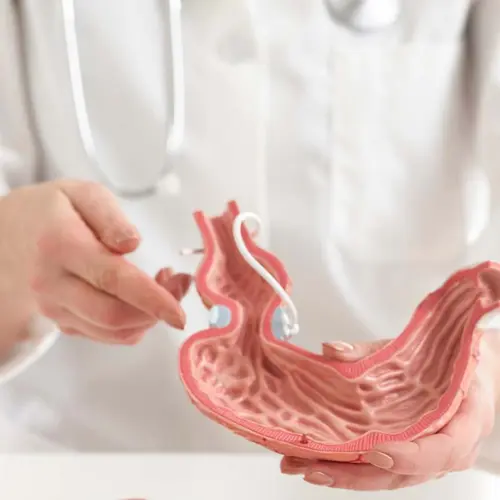Table of Contents
Obesity and Fatty Liver Disease. Obesity, a prevalent and growing health concern worldwide, is not merely a matter of excess body weight; it can give rise to a multitude of health complications.
One such consequence is the development of fatty liver disease, a condition marked by fat accumulation in the liver cells.
While not everyone with obesity will develop fatty liver disease, the risk is significantly higher among those who are overweight or obese.
This introduction sets the stage to delve into the intricate relationship between obesity and fatty liver disease. We will explore the symptoms that signal the presence of this condition, the risks it poses to one's overall health, and the various treatment options available to mitigate its impact.
Understanding this connection is pivotal in promoting both individual and public health, as it sheds light on the importance of addressing obesity as a critical factor in preventing and managing fatty liver disease.
What is fatty liver disease, and how is it related to obesity?
Fatty liver disease, also known as hepatic steatosis, is characterized by excess fat accumulation in the liver. This fat buildup can interfere with the normal functioning of the liver and lead to various health complications. Fatty liver disease is typically categorized into two main types:
- Non-Alcoholic Fatty Liver Disease (NAFLD): This is the most common form of fatty liver disease and occurs in individuals who do not consume excessive alcohol. NAFLD is closely associated with obesity and metabolic syndrome, which includes conditions like high blood pressure, hormone resistance, and high cholesterol levels.
- Alcoholic Fatty Liver Disease (AFLD): As the name suggests, AFLD results from excessive alcohol consumption, which can lead to fat accumulation in the liver. While alcohol is the primary cause, obesity can exacerbate the condition if present alongside excessive alcohol intake.
The link between fatty liver disease and obesity is that excess body fat, especially visceral fat (stored around the abdomen and internal organs), can contribute to fat being deposited in the liver. This excess fat in the liver can lead to inflammation and liver damage over time. Obesity is a significant risk factor for the development and progression of NAFLD, making weight management a crucial aspect of preventing and managing this liver condition. Maintaining a healthy weight through diet and exercise is often recommended to reduce the risk of fatty liver disease and its associated complications.
What are the common symptoms of fatty liver disease?
Fatty liver disease, particularly in its early stages, often does not produce noticeable symptoms. This is why it is sometimes called a "silent" condition. However, as the disease progresses, some individuals may experience the following symptoms:
- Fatigue: Feeling unusually tired or lacking energy can be a common symptom of fatty liver disease.
- Abdominal Discomfort: Some people may experience mild discomfort or pain in the upper right side of the abdomen, where the liver is located.
- Unexplained Weight Loss: In some cases, unexplained weight loss may occur, although it is not a prominent symptom for everyone with fatty liver disease.
It's important to note that these symptoms are not exclusive to fatty liver disease and can be associated with other health conditions. Many individuals with fatty liver disease remain asymptomatic, and the condition is often discovered incidentally during routine medical examinations or when evaluating unrelated health issues.
If you suspect you may have fatty liver disease or are experiencing any of these symptoms; it is essential to consult a healthcare provider for a proper diagnosis and guidance on managing the condition. Additionally, routine check-ups and liver function tests can help monitor liver health, especially for individuals at risk, such as those with obesity or metabolic syndrome.
How does obesity increase the risk of developing fatty liver disease?
Obesity increases the risk of developing fatty liver disease through several interconnected mechanisms:
- Hormone Resistance: Obesity is often associated with hormone resistance, a condition in which the body's cells do not respond effectively to hormone. This leads to higher hormone levels in the blood, promoting fat accumulation in the liver.
- Increased Free Fatty Acids: In obesity, an excess of free fatty acids is circulating in the bloodstream. These free fatty acids can be taken up by the liver and stored as triglycerides, contributing to fat buildup within liver cells.
- Inflammatory Response: Obesity triggers chronic low-grade inflammation throughout the body and the liver. This inflammation can damage liver cells and impair their function, further exacerbating fatty liver disease.
- Alterations in Adipokines: Adipokines are signaling molecules released by fat tissue. In obesity, there is an imbalance in adipokines, with increased production of pro-inflammatory adipokines and decreased anti-inflammatory ones. This imbalance can contribute to liver inflammation and injury.
- Increased Risk of Metabolic Syndrome: Obesity is a critical component of metabolic syndrome, a cluster of conditions that includes high blood pressure, abnormal lipid profiles, hormone resistance, and abdominal obesity. Metabolic syndrome is strongly linked to fatty liver disease.
- Enhanced Fat Storage: Fat tissue, particularly visceral fat (fat stored around the abdomen and internal organs), releases fatty acids delivered directly to the liver through the portal vein. This can overload the liver's capacity to process and metabolize fats, accumulating fat.
- Altered Gut Microbiota: Obesity can lead to changes in the composition of the gut microbiota, which may influence the development and progression of fatty liver disease through various mechanisms, including inflammation and metabolic disturbances.
These factors collectively contribute to the development and progression of non-alcoholic fatty liver disease (NAFLD) in individuals who are overweight or obese.
It's important to note that not all obese individuals will develop fatty liver disease, but obesity significantly increases the risk.
Managing obesity through lifestyle changes such as weight loss, a balanced diet, regular exercise, and addressing related metabolic issues is crucial in preventing and managing fatty liver disease.
Can fatty liver disease be reversed or treated?
Fatty liver disease can often be reversed or effectively treated, particularly in its early stages. The specific approach to treatment and reversal may vary depending on the severity of the disease and individual factors, but the following strategies are commonly used:
- Lifestyle Modifications: Healthy lifestyle changes are the cornerstone of fatty liver disease management. These include:
- Weight Loss: Achieving and maintaining a healthy weight is a primary goal. Even a modest weight loss (typically 5-10% of body weight) can significantly improve liver health.
- Balanced Diet: Adopting a balanced diet low in saturated fats, sugars, and refined carbohydrates is essential. Focus on whole foods, fruits, vegetables, lean proteins, and whole grains.
- Regular Exercise: Regular physical activity can help lose weight, improve hormone sensitivity, and reduce liver fat. Aim for at least 150 minutes of moderate-intensity exercise per week.
- Limiting Alcohol: If you have alcoholic fatty liver disease (AFLD), reducing or eliminating alcohol consumption is essential.
- Medical Management: Sometimes, healthcare providers prescribe medications or supplements to help manage fatty liver disease. These may include:
- Antioxidants: Vitamin E supplements may be recommended to reduce liver inflammation in specific cases.
- Weight Loss Medications: In certain situations, weight loss medications may be considered to aid in achieving and maintaining a healthy weight.
- Monitoring and Follow-Up: Regular monitoring of liver function and imaging tests, such as ultrasound or MRI, can help assess the progression and improvement of the disease.
- Treatment of Underlying Conditions: Managing and controlling underlying conditions like diabetes, high blood pressure, and high cholesterol is crucial, as these can exacerbate fatty liver disease.
It's important to note that fatty liver disease is a complex condition, and the best treatment plan may vary from person to person. Therefore, individuals with fatty liver disease should work closely with their healthcare providers to develop a personalized treatment and management plan.
Additionally, while early-stage fatty liver disease is often reversible with lifestyle changes, advanced stages, such as non-alcoholic steatohepatitis (NASH) or cirrhosis, may require more intensive medical interventions and ongoing care. Early detection and intervention are crucial to preventing the progression of fatty liver disease and its associated complications.




















